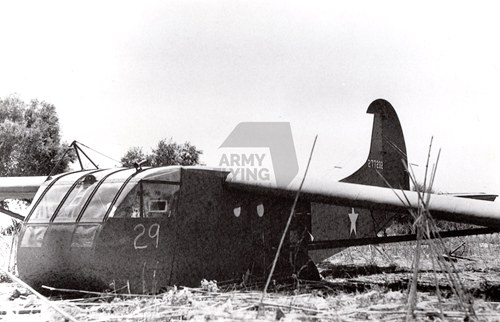Operation HUSKY

On 9 July 1943, British and American forces launched the invasion of Sicily, under the codename Operation HUSKY. It was hoped that taking Sicily would force Italy out of the war, and divert German forces away from France and the Eastern Front. As part of Operation HUSKY, gliderborne forces carried into battle by the Glider Pilot Regiment (GPR) were used en masse for the first time.

The GPR used American Waco and British Horsa gliders. While the smaller Waco glider could be shipped to North Africa from the United States in preparation for the invasion, the larger Horsa had to be towed over 1,200 miles from Britain to Tunisia by modified Halifax Bombers. This logistical challenge, codenamed Operation TURKEY-BUZZARD, put immense mechanical strain on the gliders and aircraft, resulting in the loss of 21 RAF aircrew and three GPR pilots. Nevertheless, the operation successfully delivered 27 Horsa gliders to North Africa between 3 June and 7 July 1943.

While their gliders were on route, GPR personnel not involved in Operation TURKEY-BUZZARD had already been transferred to North Africa. The GPR was stationed at Tizi Camp, Algeria, repurposed from its primary function of holding prisoners of war. Here, the regiment endured heavy rain, rivers of mud, and scorching sun under canvas, before being transferred to Froha aerodrome. Pilots of the regiment had no experience of flying Wacos. When the gliders finally arrived on 29 May, the GPR instituted a comprehensive training regime. Before HUSKY was launched, training flights were conducted almost 24 hours a day, with over 1,800 being completed in the three weeks before the invasion date.

Operation LADBROKE, the glider assault component of HUSKY, was launched on the night of 9 July 1943 in advance of the amphibious beach landings. Glidertroops were to secure the Ponte Grande Bridge and capture the city of Syracuse. Navigational errors and anti-aircraft fire meant gliders were released too early, crashing into the sea or failing to reach the planned landing zone. Many gliderborne troops and GPR crews drowned. Only 87 men reached the bridge, holding it until afternoon on 10 July when it was recaptured by Italian forces.

Only one glider pilot, Lieutenant Dennis Patten Galpin, managed to successfully land on target, close to the Ponte Grande Bridge. A remarkable achievement, as his glider was released from its tow six miles out to sea. Once on the ground, Galpin took part in the capture of the bridge with the men he had carried into battle, exemplifying the ‘total soldier’ role of GPR men who were both pilots and infantrymen. For his actions, Lieutenant Galpin was awarded the Distinguished Flying Medal.
